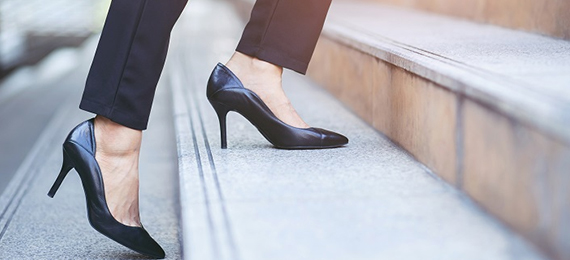
Like other forms of shoes, high heels have a history. The pictorial evidence of high heels can be traced back to the 10th century. The high heeled shoes come a long way. Believe it or not, high heels were invented for men. There are many reasons why women wear heels today, did you know why men wore high heels long back? Read on to find intriguing historical facts about the first high heels.
What Is the Purpose of High Heels?
High heels are a type of footwear that come with tall, thin heels.These heels can elevate your height over 3.5 cm. High heels make you taller, make your legs visibly longer and also accentuate the muscle tone in the legs.
Who Was the First Woman to Wear High Heels?
- A. Catherine de Medici
- B. Maria Theresa
- C. Elizabeth of Russia
- D. Catherine the Great
History of High Heels
Earlier, high heels were invented for function, not for fashion.
According to podiatrist and shoe historian Cameron Kippen, the origin of the high heel is associated with horse riding and warriors because they wore heels to hold tight to the saddle.
Who invented high heels? Persian soldiers wore the first high heels in the 10th century to elevate their feet. These heels provided the stability they needed while shooting their bows and arrows. Men’s heels represented high social culture, fashion and military power.
These soldiers flaunted their boots with heels. Later, it became fashionable for rich courtiers and kings.
Persian soldiers and migrants credited for spreading the shoe trend to Europe. Later, the European aristocrats embraced the new style as a powerful military strategy to look taller.
Ancient Rome and Greece wore high heels which were known as “kothorni” or “Buskins.” These shoes are made with wooden heels.
In the middle of the 1500s, thinner high heeled shoes were made and considered more stylish.
The first woman who wore a high heel was Catherine de Medici in the 16th century.
In the 1950s, shoemakers began to make thin heels in steel, to support their weight.
Then the stiletto was introduced. It has remarkably thin and needle-like heels.
In the 1960s, with the increasing popularity of the miniskirt, stiletto heels became trending.
In the 1700s women wore high heels to make their feet appear smaller. Women wear heels to elevate their height. In the past, women wore heels under hidden skirts to make their feet appear smaller.
Louis XIV and Marquise de Pompadour loved wearing high heels during their periods(the 1700s).
Napoleon abolished high heeled shoes in 1791. It made a comeback in the 1790s, courtesy Marie Antoinette wore 2-inch high heels.
High heeled shoes turned into women’s footwear in the 18th century.
High heels began to be available in various lengths.
Hence, it gained more popularity in the 19th century.
In the 20th century, high heels were replaced by the demand for comfy shoes.
In the middle of the 20th century, demand for stylish high heels went up. In the 1930s, high heels came in shorter lengths. Later, this was replaced by the demand for elegant high heels that come in various patterns and glittery designs and different colors.
With the rising popularity of the miniskirt at the beginning of the 1960s, shoes with stiletto heels also became popular.
High heels came back in fashion in the 1980s, a trend that continued into the early 1990s
High heels will continue to stay in fashion. It is an essential accessory to wear at parties and other special occasions.